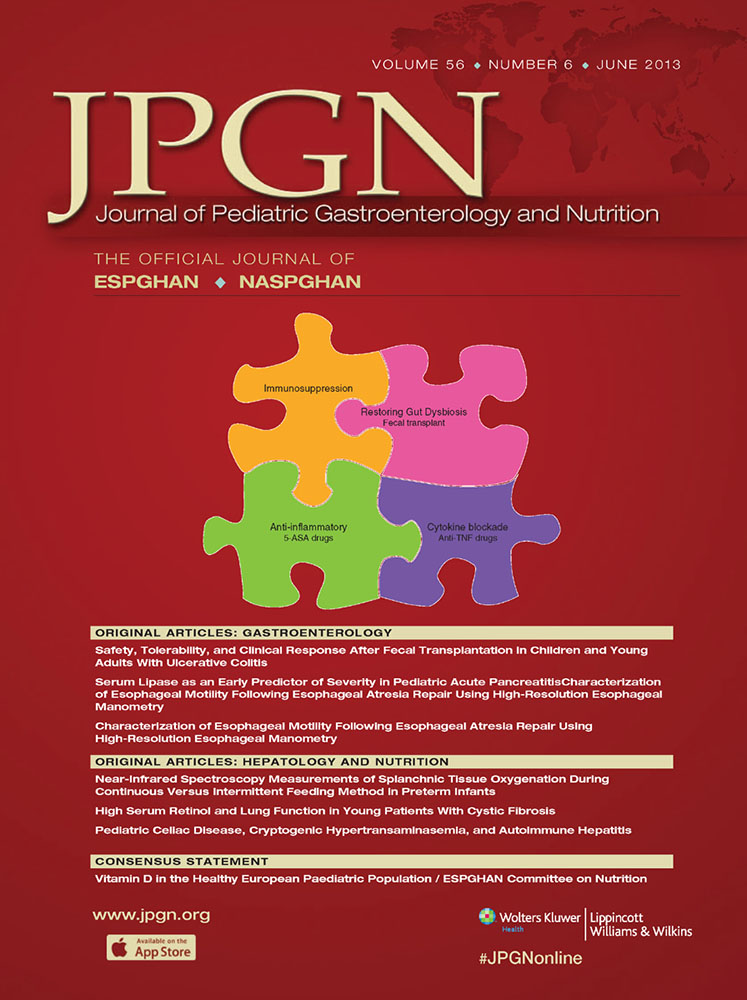Characterization of Esophageal Motility Following Esophageal Atresia Repair Using High-Resolution Esophageal Manometry
This article has been developed as a Journal CME Activity by NASPGHAN. Visit http://www.naspghan.org/wmspage.cfm?parm1=361 to view instructions, documentation, and the complete necessary steps to receive CME credit for reading this article.
The authors report no conflicts of interest.
ABSTRACT
Background:
Esophageal dysmotility, a considerable issue following esophageal atresia (EA) repair, has been reported but has not been precisely described and characterized. Using high-resolution esophageal manometry (HREM), we characterized the esophageal motility patterns in children with repaired EA and compared these patterns of dysmotility with symptomatology.
Methods:
HREM was performed as an outpatient procedure in patients with repaired EA. The tracings were analyzed using the software provided by the company and were then reviewed visually. Charts were reviewed for medical/surgical histories and symptoms were assessed by a standardized questionnaire.
Results:
Forty patients (25 boys, 15 girls) with a median age of 8 years (11 months–18 years) underwent an HREM. Thirty-five patients had type C EA and 5 had type A EA. Only 7 patients were asymptomatic at the time of the examination. HREM results were abnormal in all of the patients. Three different esophageal motility patterns were derived from HREM tracing analysis: aperistalsis (15 patients, 38%), pressurization (6 patients, 15%), and distal contractions (19 patients, 47%). Distal contractions pattern was found exclusively in type C EA. Dysphagia was encountered in the 3 groups. Gastroesophageal reflux disease-related symptoms predominated in the aperistalsis group.
Conclusions:
HREM improves our understanding and allows precise characterization of esophageal dysmotility in patients who have undergone EA repair.




